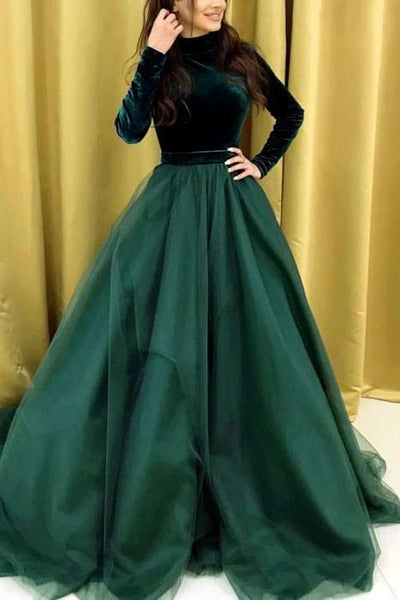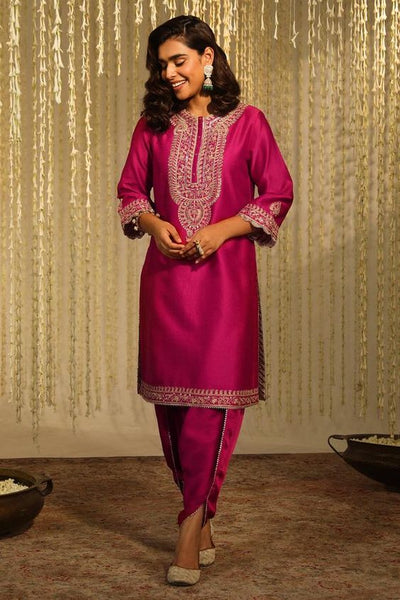What is The Satin Fabric?
Satin is not a fabric but a weave. The textile industry has three main types of weave namely plain, twill, and Satin people often think that satin is a fabric name but it depends on the way of fabric is woven.
What Are the Origins of Satin?
Satin traces its origins back to the Middle Ages in the 8th century, arising in Islamic territories before spreading westward throughout medieval Europe. Satin became renowned as a luxurious textile fabric valued by royalty and the elite for its smooth texture and mesmerizing lustre. The distinctive shiny appearance of satin results from its unique weaving structure of glossy warp yarns floating over duller weft yarns in the fabric.
The name "satin" has etymological connections to the port city of Zayton or Guangzhou in China, which was an essential site for exporting elegant silken textiles along ancient trade routes. By the 14th century, satin fabrics were being produced by specialized weavers across Italy, France, England, and Spain to meet the extravagant demands of the aristocratic and wealthy classes in Western Europe and beyond.
What Is Satin Weave?
Do you know what is satin fabric? A satin weave is a unique textile production technique that creates a distinctive smooth, glossy fabric finish. In a satin weave, the warp yarns float over several weft yarns in a specified sequence, typically with four or more warp fibres crossing before an intersection. This causes the warp thread faces to be exposed prominently on the surface, forming a luxurious glossy effect.
The weft yarns are visible as dull backs on the reverse fabric side. The extended floats generate extra shine and a supple drape. However, they also make the fabric prone to snagging if the quality is poor. The tightly woven structure gives satin substantial strength and durability despite its delicate appearance. Let's see the various types of satin available in the market.
Types of Satin Weave
- 4 harness Satin wave - in the 4/1 satin weave one weft thread goes over three warp threads and then under one
- 5 harness Satin weave - In this weft thread goes over four warp threads and under one. This makes the fabric more elastic and stretchy.
- 8 harness Satin weave - In this, the weft threads go over seven warp threads and under one. This is the most flexible form of Satin
Read more: Embroidery: History, Origin, Types and More

Pros and Cons of Satin Fabric
|
Pros |
Cons |
|
Smooth luxurious texture: Satin has an exceptionally soft, polished handle and luminous sheen that appears elitist and opulent. |
Wrinkles easily: As floats are exposed on the fabric surface, satin wrinkles very readily if mistreated and requires steam pressing after laundering. |
|
Lightweight drape and flow: The way satin is woven results in a pliable, flowing drape that flatters the body shape when made into clothes adding fluid grace. |
Sensitive to heat and oils: The delicate structure also causes satin to be prone to heat damage during ironing and stain retention from body oils or creams which can be tricky to remove. |
|
Great strength and durability: Though it appears delicately glossy, a satin fabric characteristics is that it is woven tightly giving it surprising tear resistance and resilience suitable for frequent use if cared for properly. |
Potential seam slippage: If made with inferior yarns or poor construction, satin may become slippery and split seams or show pulled threads especially on bias-cut garments. |
|
Design versatility: From elegant evening gowns to sumptuous bedding, satin's sheen blends well with both vintage and contemporary aesthetics spanning fashion and interiors. |
Cool sensation on skin: Satin has higher conductive heat loss which may feel chilled against bare skin necessitating luxe lining in apparel applications. |
|
Rich, vibrant colour and print rendering: The smooth face of satin allows for vibrant colour dyes and digital print designs to be shown-off vividly without disruption by textural effects. |
Tricky sewing: Satin's delicate structure coupled with its slippery surface make it challenging to manipulate under an ordinary sewing machine requiring specialty needles and experience to avoid frustrated puckering. |
Different Types of Satin Fabric
1. Baronet satin - when rayon warp threads and the cotton weft thread are woven it creates Baronet Satin which is extremely shiny.2. Linen stain - this is a reversible type of fabric where one side is linen and the other side is satin. It could be used from either side. It has features on linen and a finish of satin.
3. Silk Satin - also known as messing is woven from the silk. This fabric is popular for its lightweight and luster. This fabric is on the expensive side hands mostly used by high-end designers.

5. Cotton Satin - cotton fabric is short-staple fibers. When these short fibers are woven is a stain weave pattern. It creates cotton satin fabric. This is the most popular fabric for summer as it provides the shine of satin and the comfort of cotton.
Production Process of Satin Fabric
Satin fabric production starts by selecting the appropriate fibres, such as silk, nylon, or polyester, that will yield the desired quality and drape. These yarns are woven on speciality looms that can carry out the complex satin weave structure with long warp floats. Once woven, the satin fabric undergoes pre-treatment stages, then colouring with solutions that enhance the signature lustre. Additional finishes are applied for stabilising, waterproofing, fire retardancy, etc. Next is quality checking before the lustrous satin fabric ships to manufacturers to stitch into lavish garments or home furnishings.
Difference Between Satin and Sateen
Let's understand some common sateen and satin fabric information.
The main difference lies in which side of the threads prominently faces upwards in the weave pattern. For satin, the glossy warp threads are exposed on the front side.
In sateen, the surface has mostly weft threads facing up arranged in a way to generate an alluring shine. This causes sateen to be slightly thinner with a more fluid drape yet less structural durability compared to traditional satin fabric.
However, both achieve smooth, decadent textures, capitalising on floating threads to reflect light differently.
Characteristics of Satin Fabric
Satin fabric is known for its nobility and royal look the majestic looking fabric has many differentiating characteristics-
- Durable - The long filament fibers are woven in such a way that they make the fabric through and durable.
- Soft - the perfect threadwork makes satin woven fabrics
- Easily Drapeable - The fall of this fabric is gorgeous hands making it easily drapeable. Because of these features, the fabric is used in making dresses, gowns, and bridal wear.
- Shiny - The warp and weft thread combination makes fabric shiny from one side and dull from another.
- Wrinkle resistant - Like other fabrics satin does not wrinkle easily.

How to Care for Satin Fabric?
- Always wash satin in cold water.
- Use chemical-free or soft detergent to preserve its quality.
- A solid using any bleaching material to remove the stain can lead to decolorization
- If using a washing machine, set it to a delicate cycle.
- Let satin air dry or hand it on drying nack
- Set the temperature on low before irony satin fabric.
Use of Satin Fabric
- Satin has gained a lot of prominence over the period and it is used in all segments like garments, footwear, and upholstery.
- Stain scrunchies are in limelight these days as the satin fabric is good for hair.
Frequently Asked Questions
1. Is satin fabric environmentally friendly?
Satin is not inherently eco-friendly, as the common fibres used are nylon and polyester from non-renewable sources. However, purchasing satin made with certified recycled synthetics or ones utilising greener production helps lower environmental impact.
2. Can satin fabric be dyed?
Yes, satin readily accepts fabric dyes to achieve an extensive colour range. Its smooth surface neatly reflects dyed hues without disruption. Vibrant patterns and prints are also easily imprinted onto satin’s glossy face through digital textile printing.
3. Is satin fabric suitable for all climates?
Satin can feel cool against bare skin, making it less ideal for icy conditions without sufficient linings or underlayers. However, the breathable, lightweight fabric provides comfort in hot, humid weather.
4. Does satin fabric wrinkle easily?
Due to the floating yarns, satin wrinkles and creases very readily under pressure. Wrinkle-resistant treatments help, but heat-based pressing is required after laundering to smooth satin’s delicate structure.
5. How can I prevent satin fabric from snagging or pulling?
Opt for high-quality satin with a dense structure and cleanly finished edges. Avoid surfaces that could catch. Use fine speciality needles and nylon thread to minimise potential damage when sewing.
6. Are there any specific considerations for sewing with satin fabric?
Satin demands sharp, microfine needles and slow speed to avoid skipped stitches. Nylon thread prevents friction from pulling. Underpinning, basting and taping down fabric edges are imperative to limit distortion when stitching seams.
 Call Us
Call Us

